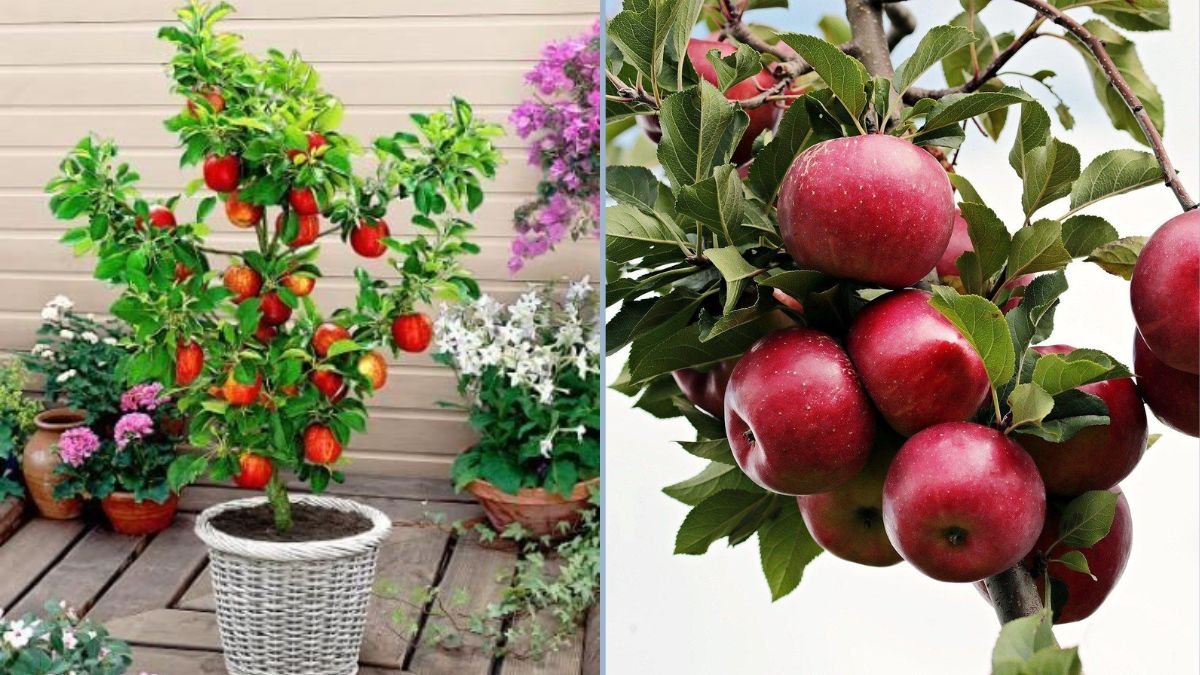Growing your own Jazz apples in a kitchen garden is a rewarding way to enjoy crisp, tangy-sweet apples right at home. Known for their crunchy texture, unique red-and-yellow skin, and sweet-tart flavor, Jazz apples are perfect for fresh snacking, salads, and baking. Planting a Jazz apple tree in your backyard or kitchen garden allows you to experience the full journey of fruit growing, from planting and nurturing to harvesting your very own homegrown apples.
This guide covers everything you need to know about selecting, planting, caring for, and harvesting Jazz apple trees so your kitchen garden can produce healthy, productive fruit year after year.
Why Choose Jazz Apples?
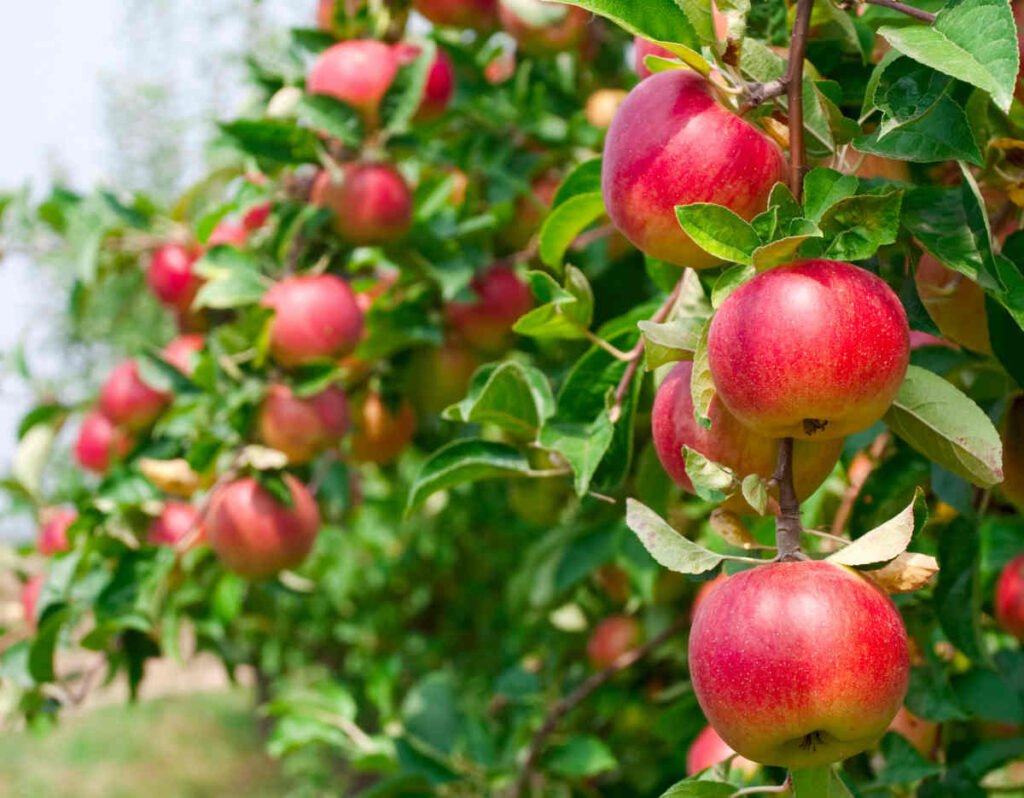
Jazz apples are a hybrid variety, created from Braeburn and Royal Gala, combining the best qualities of both:
- Flavor: Balanced sweet-tart taste makes them ideal for snacking and cooking.
- Crisp Texture: Firm and crunchy, even after storage.
- Versatile Use: Perfect for salads, pies, baking, and fresh eating.
- Visual Appeal: Red and yellow streaked skin makes them attractive in the garden and kitchen.
- Reliable Production: Hardy and productive, suitable for home gardens.
These qualities make Jazz apples a great choice for any kitchen garden, especially for gardeners looking for both flavor and aesthetic appeal.
Selecting the Right Jazz Apple Tree
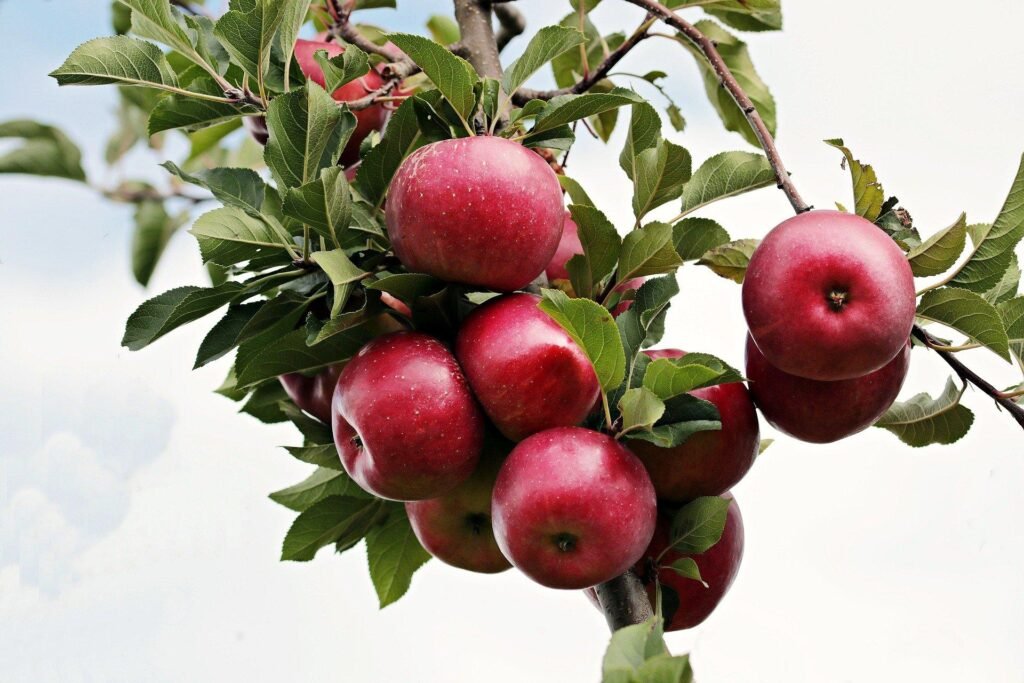
Choosing a healthy tree ensures long-term success.
1. Tree Type
- Bare-root trees: Sold during dormancy (winter), affordable, and establish well when planted in early spring.
- Container-grown trees: Available year-round, easier to plant, and reduce transplant shock.
2. Rootstock
Rootstock affects tree size and garden suitability:
- Dwarf rootstock: 8–10 feet tall; perfect for small kitchen gardens or containers.
- Semi-dwarf rootstock: 12–15 feet tall; suitable for medium-sized gardens.
- Standard rootstock: 18–25 feet tall; ideal for larger spaces.
3. Pollination
Jazz apples are not fully self-fertile. Plant another compatible apple variety nearby, such as Fuji, Gala, or Braeburn, to improve fruit set and yield. Bees are essential for effective pollination.
Choosing the Planting Site
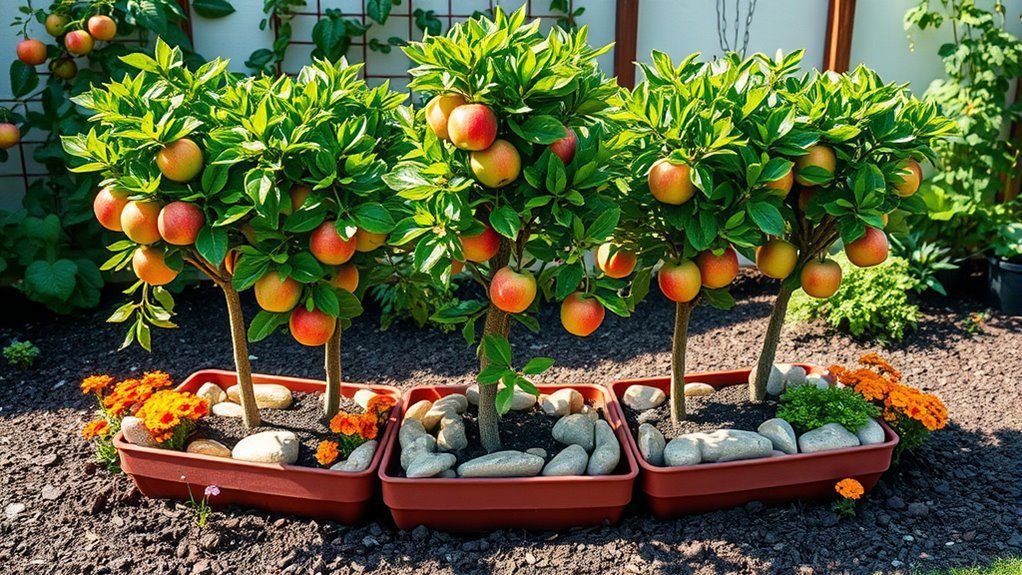
The planting site determines the tree’s health and productivity.
1. Sunlight
- Requires 6–8 hours of direct sunlight daily.
- Full sun promotes sugar development, flavor, and healthy growth.
2. Soil
- Prefers well-draining, loamy soil.
- Soil pH should be between 6.0–7.0.
- Amend soil with compost or well-rotted manure to improve fertility and drainage.
3. Air Circulation
- Plant in open areas to reduce fungal disease risk, including apple scab and powdery mildew.
- Avoid low spots where frost or water might collect.
4. Spacing
- Standard trees: 18–25 feet apart
- Semi-dwarf: 12–15 feet apart
- Dwarf: 8–10 feet apart
Proper spacing ensures sunlight reaches all branches, promotes airflow, and simplifies pruning and harvesting.
Planting Your Jazz Apple Tree
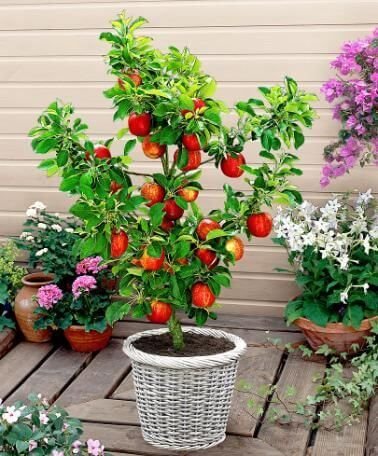
Proper planting sets the foundation for a healthy, productive tree.
Step 1: Dig the Hole
- Dig a hole twice as wide and slightly deeper than the root ball.
- Loosen the soil at the bottom to encourage root growth.
Step 2: Position the Tree
- Place the tree in the hole, keeping the graft union a few inches above soil level.
- Spread roots evenly and backfill with a mix of native soil and compost.
- Firm the soil gently to remove air pockets.
Step 3: Watering and Mulching
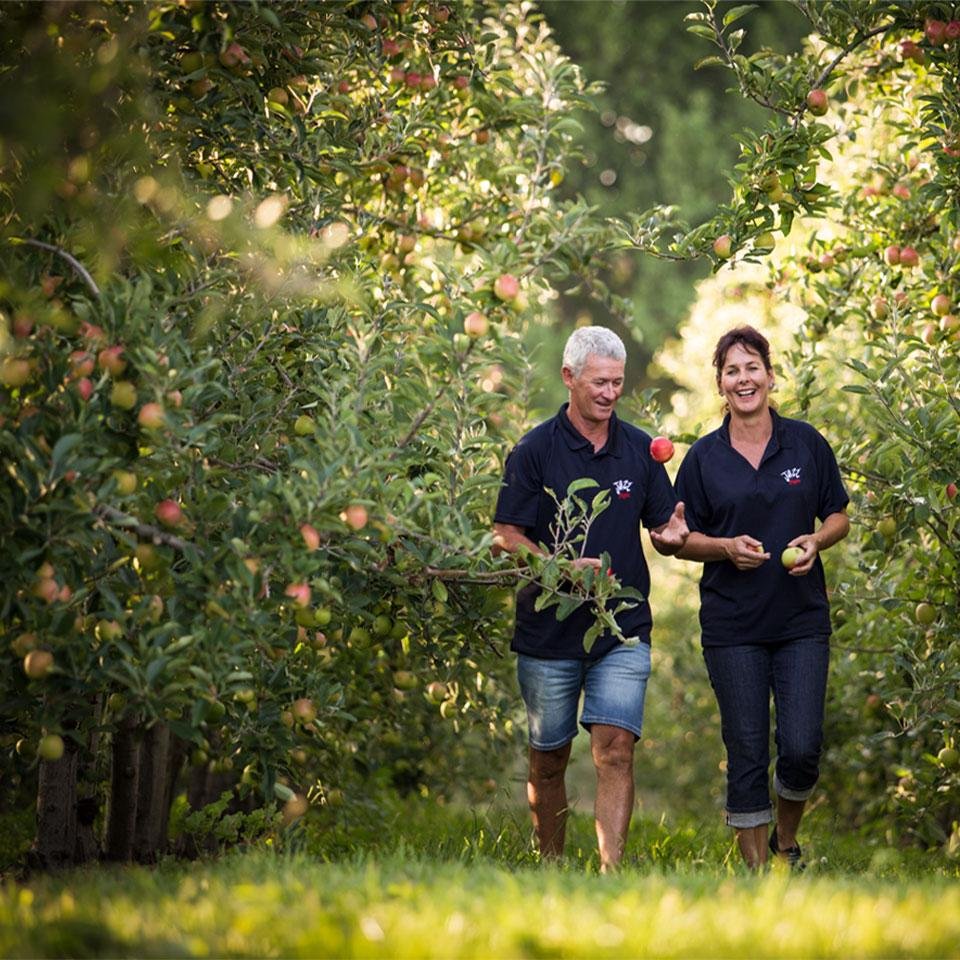
- Water thoroughly to settle the roots.
- Apply 2–3 inches of mulch around the base to retain moisture and suppress weeds.
- Keep mulch a few inches away from the trunk to prevent rot.
Step 4: Staking
- Young trees may need staking for stability.
- Remove stakes after one growing season once the trunk has strengthened.
Caring for Your Jazz Apple Tree
Proper care ensures healthy growth and fruit production.
1. Watering
- Young trees: Water 2–3 times per week to establish roots.
- Mature trees: Deep watering once a week, more frequently during dry spells.
- Mulching helps maintain soil moisture and regulate temperature.
2. Fertilizing
- First-year trees: Light fertilization for root establishment.
- Second year onward: Apply balanced fertilizer (10–10–10 NPK) in early spring.
- Avoid excess nitrogen, which encourages leafy growth instead of fruiting.
3. Pruning
Pruning maintains tree structure, encourages fruiting, and improves airflow.
Dormant Pruning
- Conduct in late winter before buds break.
- Remove dead, damaged, or crossing branches.
- Maintain a central leader or open-center structure.
Summer Pruning
- Optional light pruning removes vigorous shoots.
- Helps direct energy toward fruiting branches and improves sunlight penetration.
Pollination and Flowering
- Jazz apple trees bloom in spring, producing white blossoms.
- Plant a compatible apple variety nearby for cross-pollination.
- Bees are essential during bloom, so avoid pesticide use at this time.
Pest and Disease Management
Even backyard apple trees need attention to stay healthy.
Common Pests
- Aphids
- Codling moths
- Spider mites
Common Diseases
- Apple scab
- Powdery mildew
- Fire blight
Preventive Measures:
- Prune for airflow and sunlight exposure.
- Remove fallen leaves and fruit to reduce fungal buildup.
- Use organic sprays like neem oil or horticultural soap as needed.
Thinning Fruit for Quality
- Thin fruit clusters to 1–2 apples per cluster.
- Prevents overcrowding, reduces branch stress, and ensures larger, sweeter fruit.
- Sunlight exposure improves color and flavor.
Harvesting Jazz Apples
- Typically ready for harvest in late September to October, depending on climate.
- Signs of ripeness:
- Firm texture
- Red-and-yellow skin with vibrant blush
- Sweet-tart aroma
- Easy detachment from the branch
- Harvest carefully to avoid bruising.
- Jazz apples are great for fresh eating, salads, baking, or storage, as flavor and texture are preserved for several weeks.
Container Growing Jazz Apple Trees
- Dwarf or semi-dwarf Jazz trees thrive in large containers, perfect for small kitchen gardens or patios.
- Use pots 18–24 inches in diameter with drainage holes.
- Fill with nutrient-rich soil mixed with compost and perlite.
- Water regularly and prune to maintain size and promote fruiting.
Container planting makes it possible to grow productive apple trees even in limited spaces.
Additional Tips for a Thriving Kitchen Garden Tree
- Monitor Growth: Regularly check for pests, diseases, and nutrient deficiencies.
- Mulch Annually: Helps retain moisture and regulate soil temperature.
- Support Young Trees: Stake to prevent wind damage.
- Practice Patience: Jazz apples may take 2–4 years to produce a full harvest.
- Enjoy the Process: Gardening is rewarding—watching your tree grow and produce fruit is fulfilling.
Conclusion
Planting a Jazz apple tree in your kitchen garden is a rewarding project that combines beauty, productivity, and delicious fruit. By selecting a healthy tree, choosing the right location, and providing consistent care—including watering, fertilization, pruning, and pest management—you can grow a strong, productive tree that produces crisp, sweet-tart apples year after year.
Even in a small backyard or kitchen garden, a Jazz apple tree can thrive and provide fresh, homegrown fruit perfect for eating, cooking, or sharing with family and friends. With patience, attention, and proper care, your garden can yield beautiful, delicious Jazz apples and a lasting sense of gardening accomplishment.
